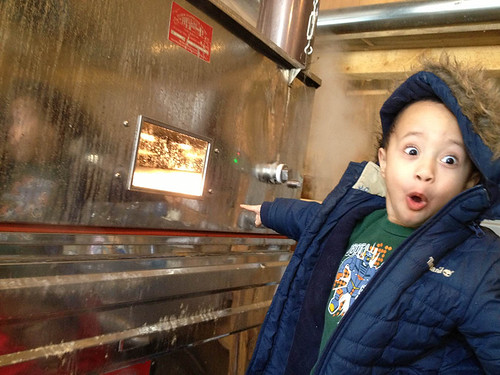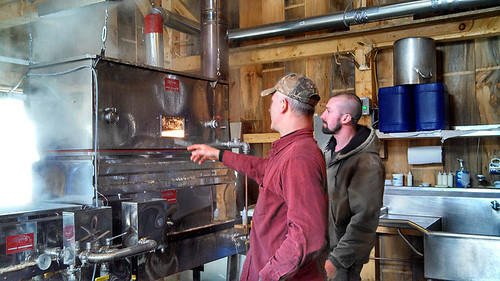
In New England – or anywhere for that matter – nothing says the weekend like a short stack fresh off the griddle, covered by its inimitable mate, maple syrup. Whether the color is dark amber or golden light, the flavor is unmistakable. But as we pick up our forks and dig in, how many of us really think about where it comes from or how it’s made?
Did you know the most common tree used is the sugar maple? It grows mostly in the Northeast and Canada.
Production of maple syrup continues to climb, and according to data from USDA’s National Agricultural Statistics Service, Connecticut saw an increase in maple sugar production with a record 78,000 taps in 2013.
Depending on weather, the traditional maple sugaring season in Connecticut runs from January until late March or early April – with freezing nights and warm, sunny days essential for sap flow.
Recently, the state’s 30 sugarhouses held annual open houses in honor of this age-old tradition. USDA’s Natural Resources Conservation Service staff showed up at some to taste, celebrate and admire their contribution to another successful year.
What does NRCS have to do with your breakfast? NRCS conservationists work with owners and managers of maple farms to put conservation practices on the land. For many of these farms, the conservation work is mostly for the sugarhouses, or facilities where the syrup is processed.
Through the Environmental Quality Incentives Program, conservationists conduct an on-farm energy audit, recommending possible conservation practices to use energy wisely.
Why does maple sugar production depend on energy? The sap collected from trees is mostly water. To get to the thick syrupy consistency and rich taste we all know and love, that water needs to be heated and evaporated, and that takes energy.
NRCS expanded financial assistance opportunities in 2012, providing help on two new pieces of equipment – reverse osmosis heaters and enhanced pre-heaters. These are designed to upgrade old, inefficient machinery used during the sugaring process, increasing effectiveness and decreasing energy use.
These new machines can reduce fuel consumption by more than 75 percent leading to better air quality through reduced emissions and a reduction in wood or oil used in the process.
So, the next time you reach for that little brown jug containing a trip to (a very sticky) Utopia, smile and give a nod to the people who spend many a cold day making it available to you, and doing it as efficiently as they can.
USDA, through NRCS and Rural Development offers funding for energy saving projects for producers. USDA Rural Development also funds reverse osmosis systems through the Rural Energy for America Program. For more information on USDA renewable energy programs see the USDA Energy website.

